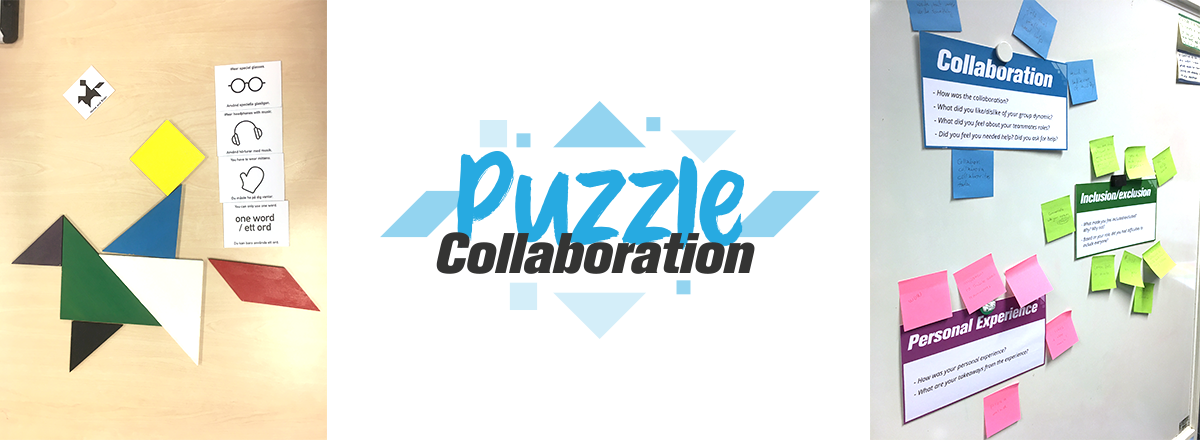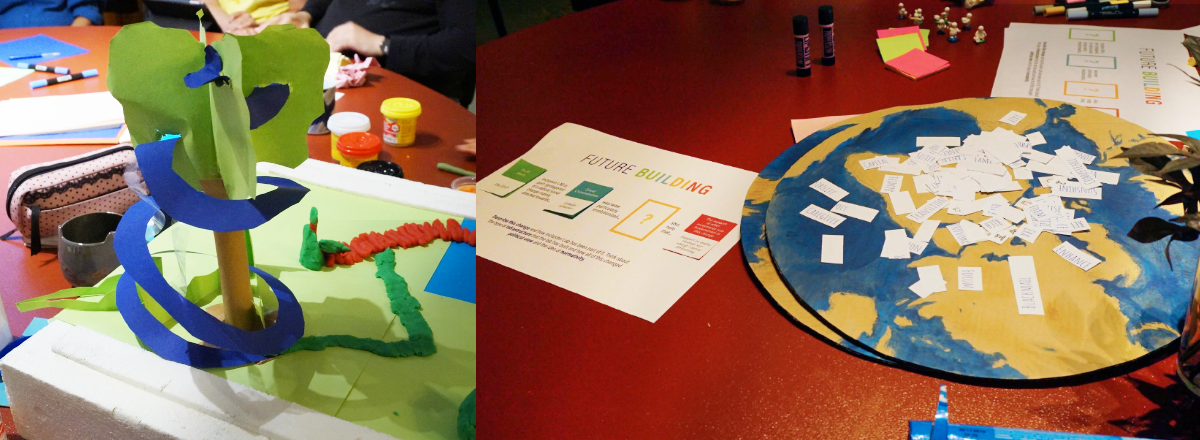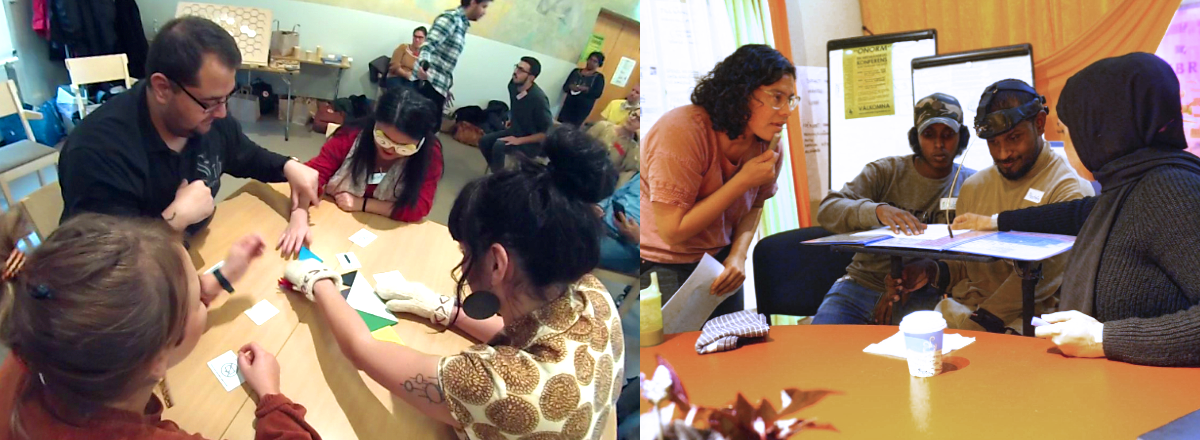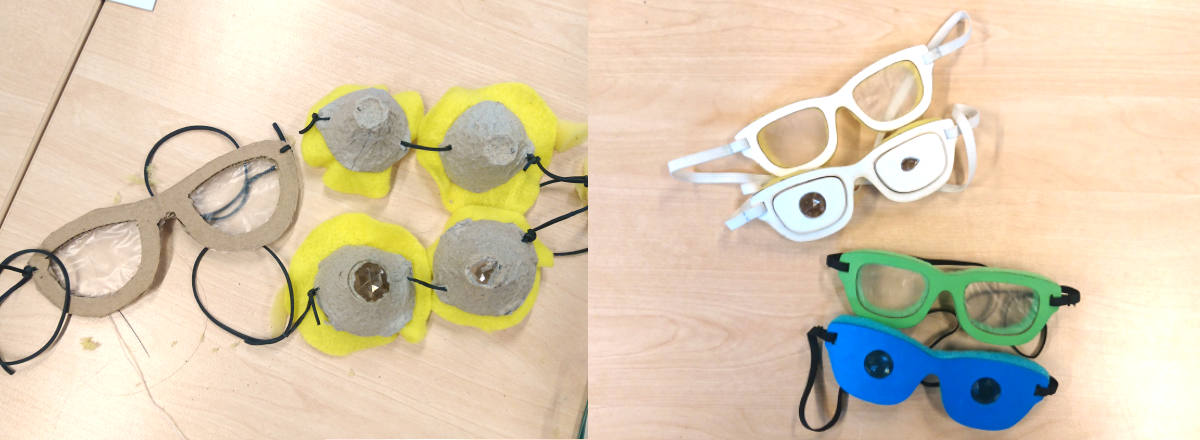Puzzle Collaboration
building a dialog about in- & exclusion

Puzzle collaboration is a playful activity that should foster a conversation on eye level about involuntary exclusion of people with disabilities. It is part of a bigger toolbox that was designed for and in collaboration with the Inkluderingslabbet (inclusion lab) in Malmö.
Focus
Design for social innovationTeam
Inkluderingslabbet Malmö , Emilie Larsson, Daniel Velasquez Araque, Anette Isabella GiesaMethods
interviews, desctop research, workshops, sketching, playtestingYear / Duration
2019 / 2,5 monthsTools
several workshop materials (pen & papaer, sticky notes, play dough, motivation cards, etc.), laser cutter, variety of materials for prototyping, IllustratorContext
In a 10-week project worked on concepts, tools and methods that could support the Inkluderingslabbet in their overarching goals. There goals are: Breaking involuntary exclusion of people with "functional variation" in different areas of society, restore the respect for life, transforming bureaucratic boundaries, and to initiate political movements in these directions.
Project summary
As a first step, it was important to establish a relationship of trust between the lab and us students. In order to achieve this, we met a few times for coffee and talked about goals and values. Afterwards, two first workshops were held. Out of the workshop results, three main topics to work with could be identified. Accordingly, three groups were created. A close communication and exchange was still maintained between the groups and if useful, workshops and test conducted together.

My group initially focussed on the topic of inclusion in education and work life. After some research and interviews it got apparent that one of the biggest problems in this area is not the lack of existing programmes and projects, but the lack of communication on eye level and general mutual understanding between involved parties. Therefore, we changed directions and focussed on designing tools that aim to create the conditions to make communication on eye level possible and encourage discussions around the topic of in- and exclusion of people with disabilities.

The result is a playful activity that is based on solving a tangram puzzle and focuses on collaboration and personal restraints. In concrete terms, this activity is a serious play session involving the recreation of a silhouette of polygonal puzzle pieces. To ensure that all participants/players are being involved and the group is solving the puzzle together, one main rule is that every player needs to place at least one puzzle piece. The introduction of role cards serves the purpose of assigning each player a type of restraint. Thereby, the player should experience what it feels like not to be able to behave or communicate as usual. Furthermore, players learn about being dependent on the help of others and/or helping others despite their own limitations.

Since the aim of this activity is to create a mindset that encourages equal communication and mutual understanding, solving the riddle is only one part of the activity. The second and even more important one is the subsequent reflection and discussion of the experience. To support this second part, categorised discussion templates and post-its are included in the activity set.

